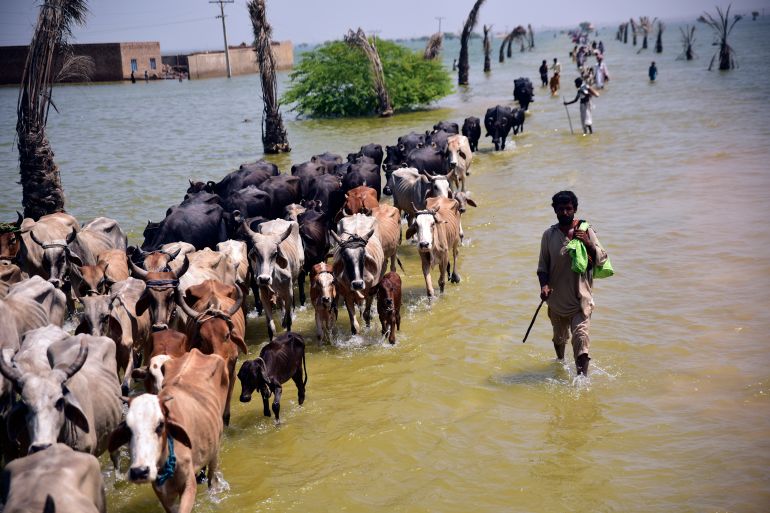Pakistan ‘strongly contests’ Moody’s ratings downgrade
Concerns are rising about Pakistan’s ability to pay for imports such as energy and food, and meet sovereign debt needs as its foreign exchange reserves shrink.

Pakistan said on Friday that it “strongly contests” a ratings downgrade by agency Moody’s, adding that it had adequate liquidity and financing arrangements to meet its external liabilities despite being hit by catastrophic floods.
Moody’s cut Pakistan’s sovereign credit rating on Thursday by one notch further into junk territory to Caa1 from B3, making it harder for the country to tap international markets for funds. It cited increased government liquidity and external vulnerability risks in the wake of floods in August that killed more than 1,600 people and caused billions of dollars in damage.
Keep reading
list of 4 itemsPakistan Floods: Can the country recover from climate disaster?
Ishaq Dar takes oath as Pakistan’s new finance minister
The hidden victims of Pakistan’s floods – the elderly
“The rating action by Moody’s was carried out unilaterally without prior consultations and meetings with our teams from the Ministry of Finance and State Bank of Pakistan,” Pakistan’s finance ministry said in a statement.
Concerns are rising about the health of Pakistan’s economy as foreign exchange reserves run low, the local currency weakens and inflation stands at decades-high levels despite the resumption of an International Monetary Fund funding programme in August.
Worries centre around its ability to pay for imports, such as energy and food, and meet sovereign debt obligations.
Data this week showed foreign exchange reserves at the central bank stood at $7.9bn. That would cover imports for barely a month.
The central bank said the latest $100m drop in reserves over the week ended September 30 was due to external debt repayments, including scheduled interest payments on Eurobonds.
Moody’s said on Thursday its ratings decision was driven by external risks and concerns about Pakistan’s ability to secure required financing to meet its needs in the next few years.
The government said that after Moody’s had intimated that action was in the offing, the finance ministry had held two meetings with the agency’s team to share information that it described as “clearly contradicting” the downgrade.
The ministry said factoring in the impact of the floods was “premature” given that loss assessments were incomplete, and added that all financing requirements would be met.
More downgrades possible
Despite Pakistan’s protestations, market watchers believe more downgrades could be coming.
“Other rating agencies may also think of downgrading Pakistan if they believe that getting dollar financing will be an issue at a time when Pakistan is suffering from after-effects of floods,” Topline Securities chief executive Muhammad Sohail told Reuters.
Before the ratings action, Moody’s had, in June, affirmed Pakistan’s B3 rating but changed its outlook from stable to negative.
Moody’s was followed by outlook downgrades in July by two other ratings agencies, Fitch and S&P Global, both of whom flagged similar issues.
‘No need to worry’
“There’s no need to worry,” Pakistan’s Minister of Finance Ishaq Dar told reporters on Friday.
He said ratings are only relevant when a country is seeking to tap the global debt market, and Pakistan was not planning to issue any such instruments at the moment.
“We first have to fix our economic indicators,” Dar said.
Pakistan said it had secured external financing mostly from bilateral rollovers, financing facilities, and multilateral lenders. Pakistan’s overall debt is largely concessionary, longer term, and from bilateral sources.
“Ministry of Finance strongly feels that the downgrading of Pakistan’s rating is not truly reflective of Pakistan’s macroeconomic conditions,” a statement from the ministry on Thursday night said.
The next significant policy event facing the country after the ratings action is a meeting of the central bank’s monetary policy committee, which convenes on Monday to decide on the key policy rate.